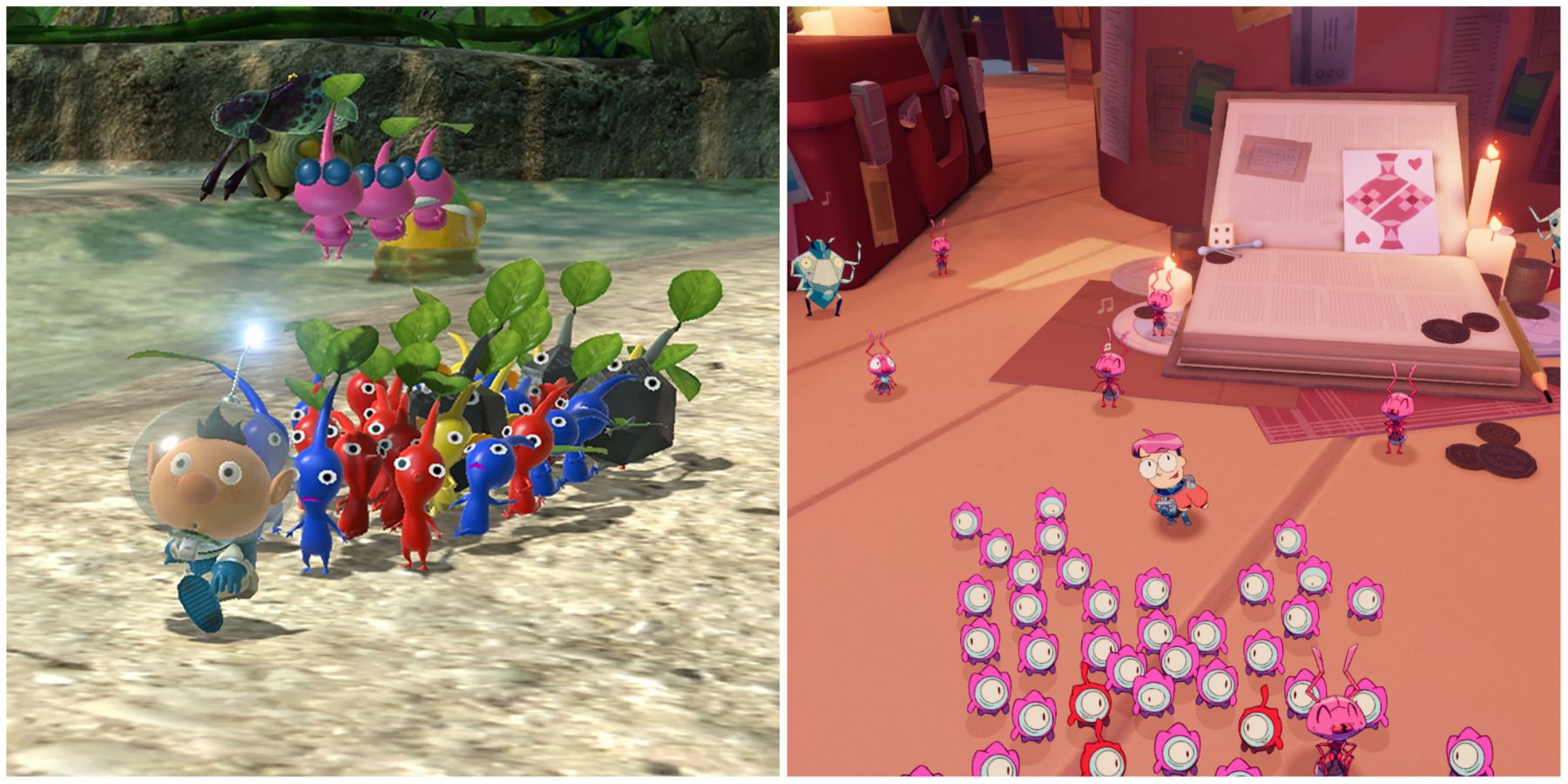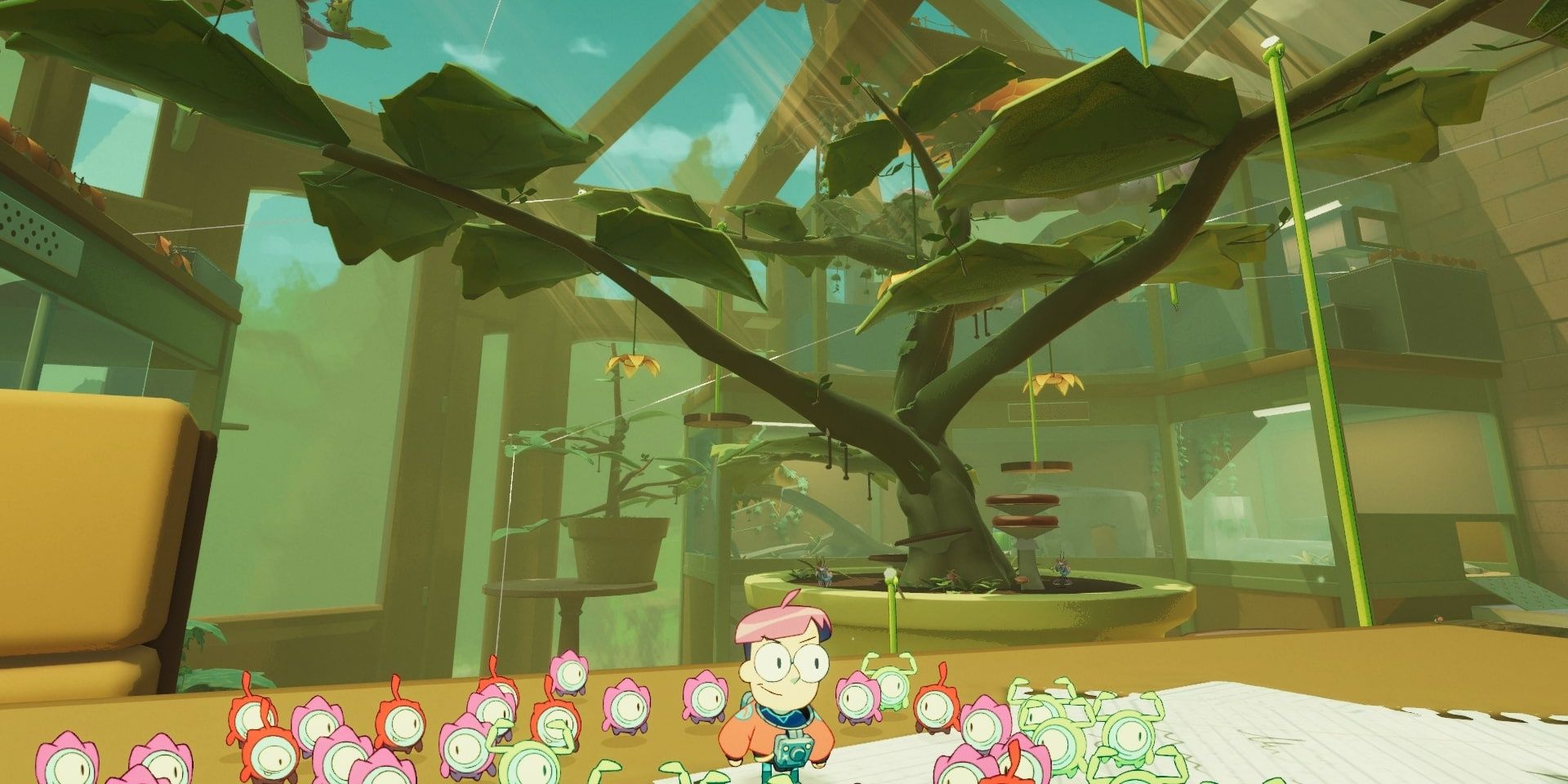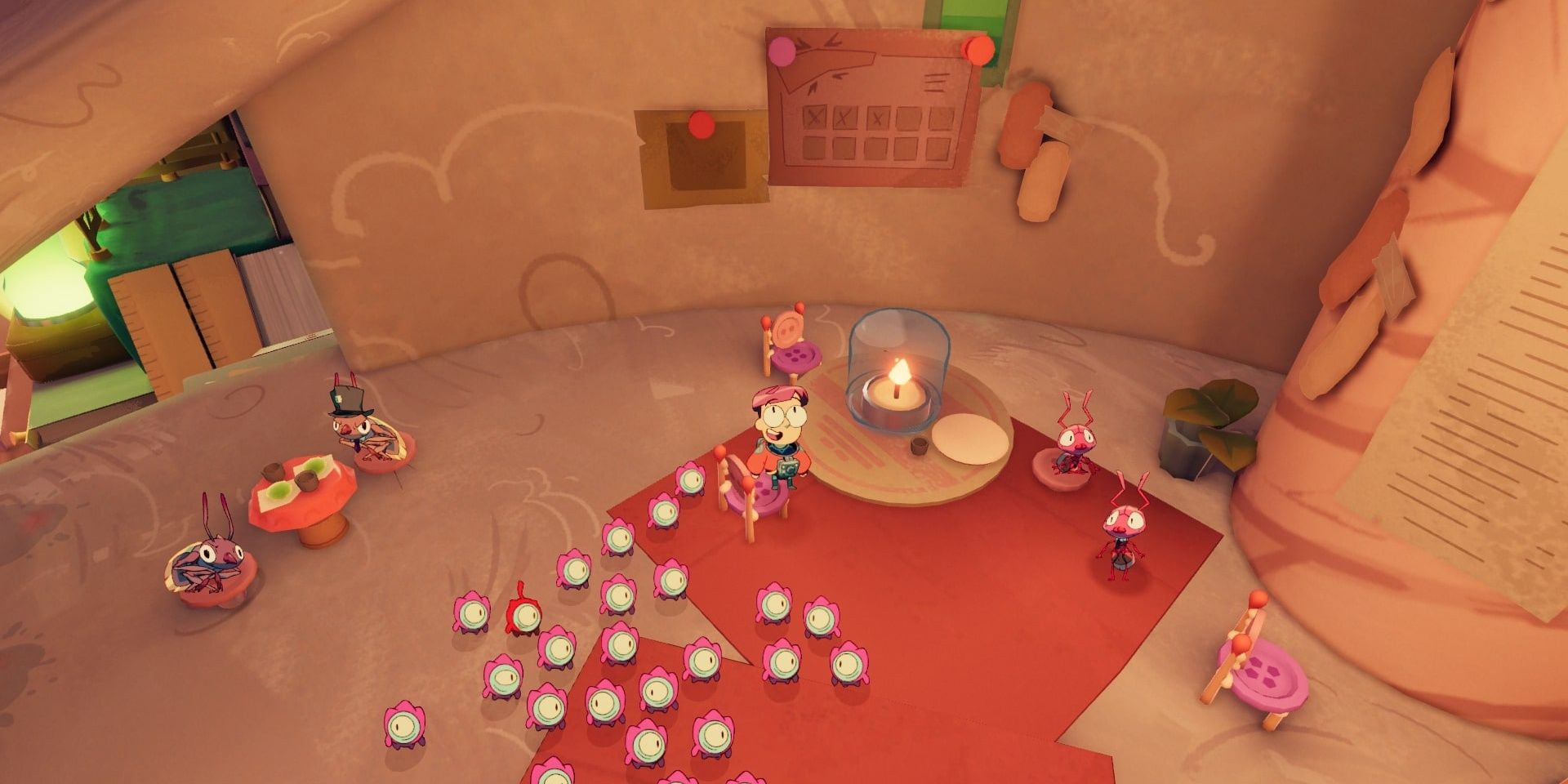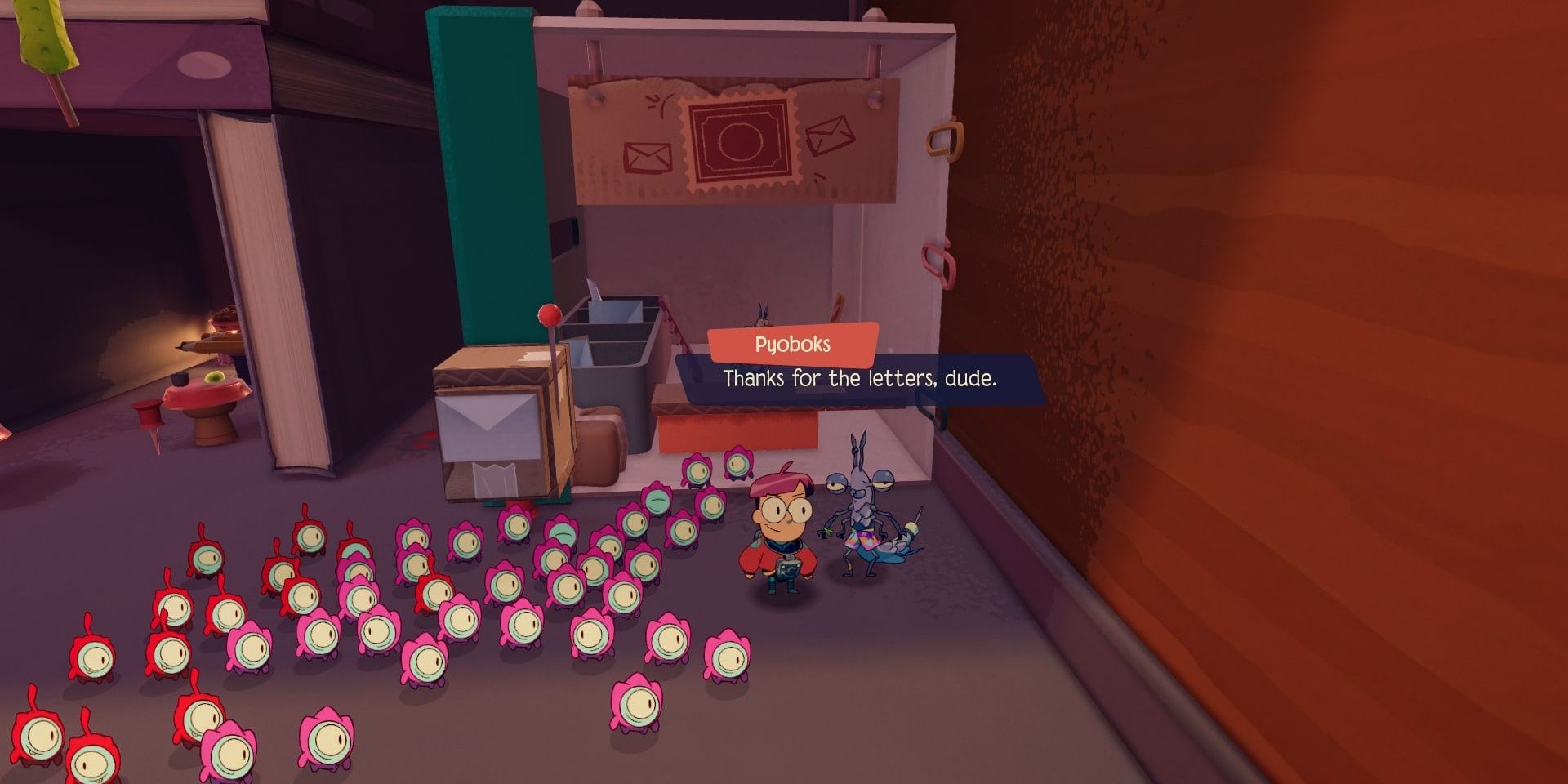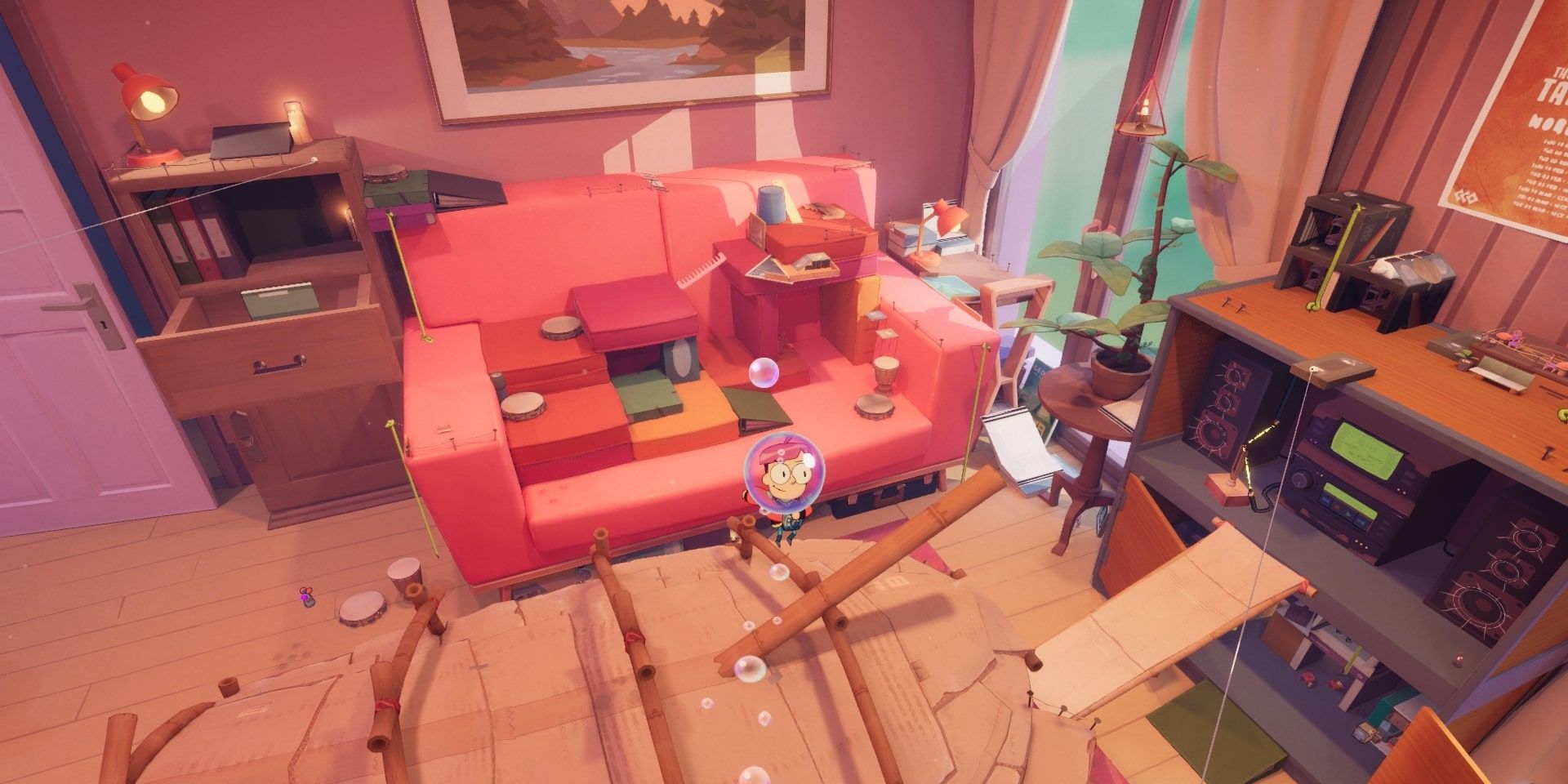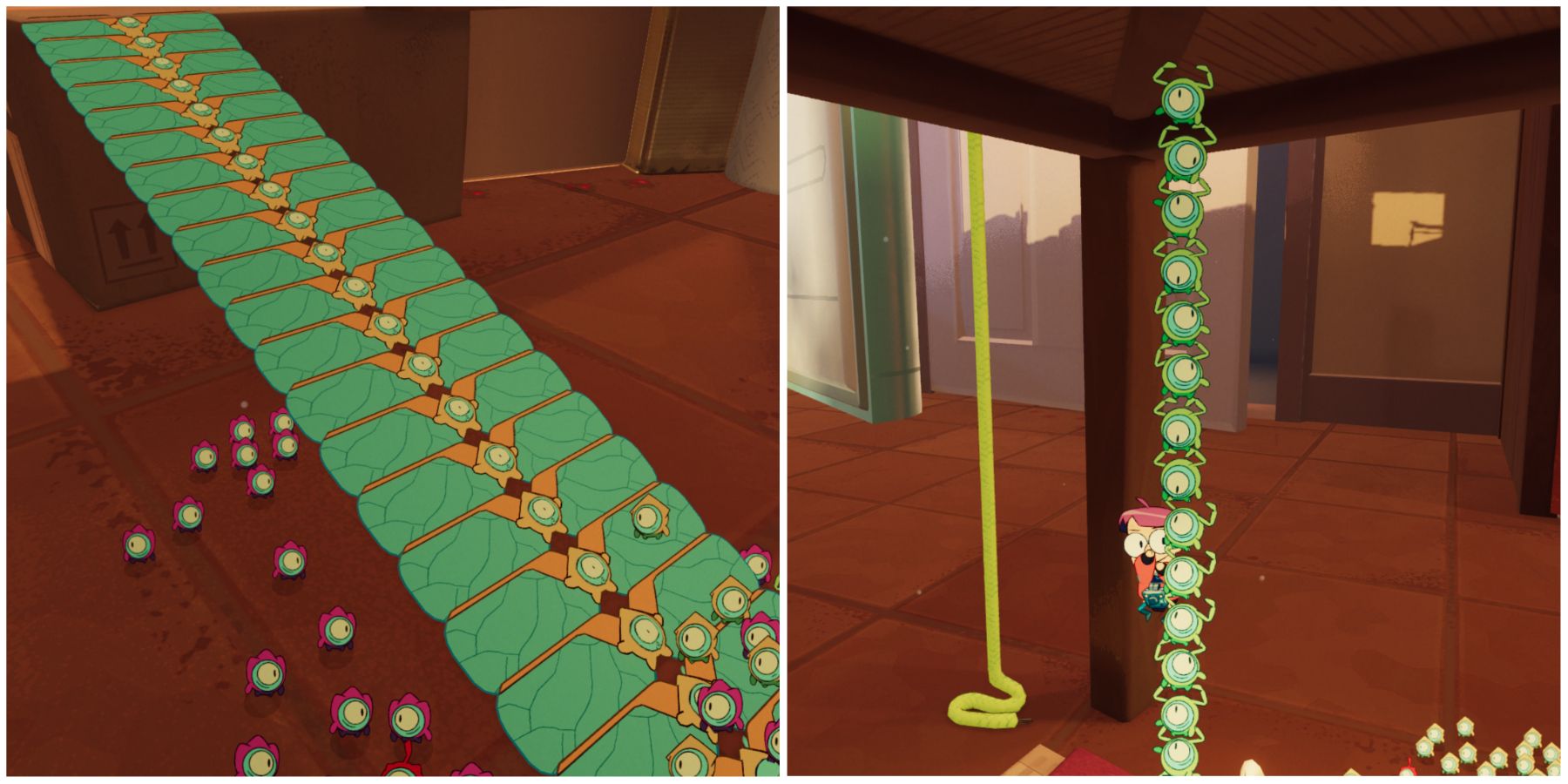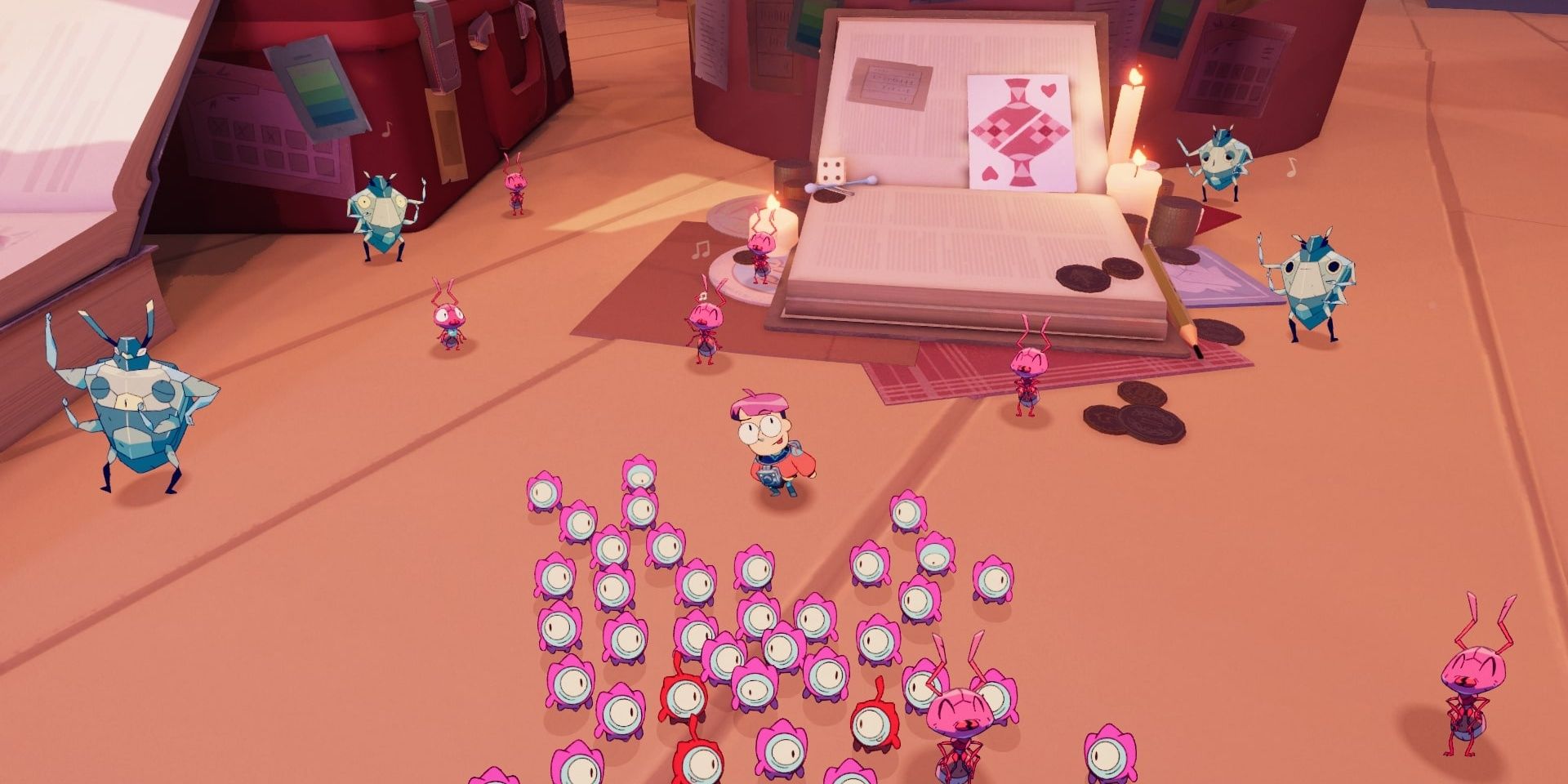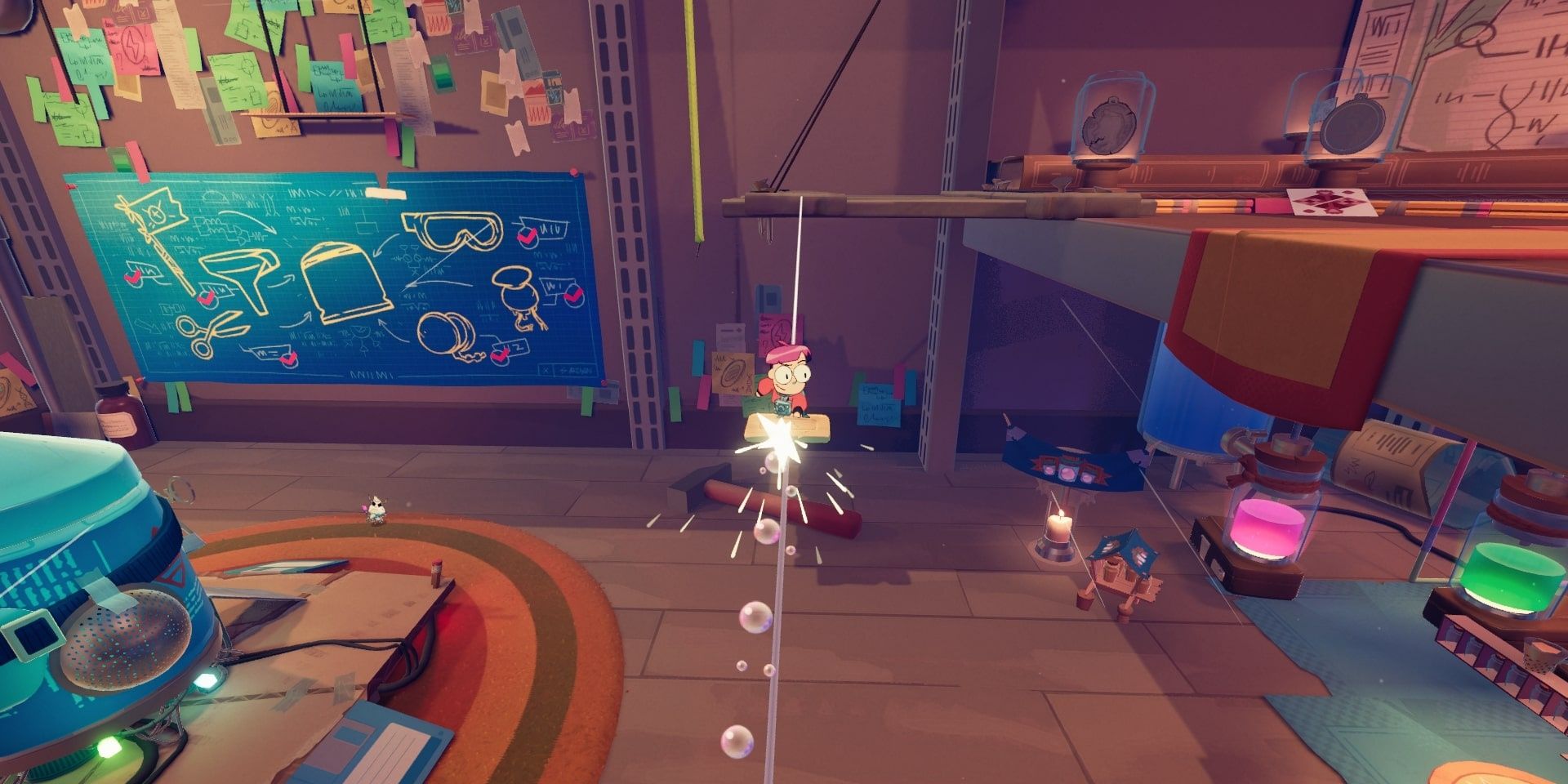Truly wonderful 3D platformers in the indie space tend to be far and few between, but Tinykin is the latest example of a real gem in the genre. This collect-a-thon adventure takes a lot of inspiration from the popular Nintendo franchise Pikmin, with a core element of the game surrounding little creatures that assist the protagonist.
While the similarities between the two games can be striking, the developers of Tinykin ensured that the game had its own identity while separating itself from the more well-known Pikmin. Whether players love the iconic Nintendo strategy franchise or not, it's important to keep in mind these differences.
7 Time Doesn't Pass
One of the key elements of the Pikmin games is that time is always moving. That means players need to complete as much as they can while the sun is still up. However, time is not a factor in Tinykin. In fact, time has stopped moving forward in the universe.
The main character arrives in a world that is stuck in 1991, with the normal day-night cycle having been frozen for quite some time. While the exact reasons for this don't get revealed until much later in the game, players should not be worried about any time-sensitive objectives during their playthrough.
6 No Pressure To Finish
Along the same lines of time not passing, there is very little pressure applied to the player in Tinykin. While Pikmin usually revolves around repairing a ship in time before losing the air necessary to breathe, protagonist Milo can actually breathe in the surrounding air.
On top of this, there is no major threat that Milo has to deal with except for the need to get back to his home planet. The game is built for players to spend a lot of time exploring each room of the large house and finding collectibles in every nook and cranny. So sit back and enjoy the sights of the home decor.
5 Many NPCs To Talk To
Generally, Pikmin is played without much contact from characters to talk to, with the occasional exception of fellow aliens who are also on the expedition. In contrast, Tinykin is filled with a world of other individuals to talk to and interact with. Specifically, the game is filled with adorable bugs.
From dung beetles to dragonflies, these critters have turned rooms of the giant house Milo's inside into miniature societies. Going up to them will give the player tips on how to play the game, small bits to chuckle at, or genuine lore building. Either way, spending time with the characters in Tinykin is a delight.
4 Focus On House Traversal
Most of Pikmin takes place outside, with players running through logs and fighting enemies in the grass. On the flip side, the events of Tinykin take place entirely inside a singular house. While there are plenty of insects to interact with, it is all done from the safety of the indoors.
The game is focused entirely on navigating through normally small areas like a bedroom, a bathroom, and a kitchen that are huge compared to Milo. There is a primary focus on interacting with household objects, including carrying large objects across a room to opening doors to cabinets that were initially hiding entire areas to explore.
3 Tinykin Don't Have Similar Roles
Both games are similar because they have little guys who serve as tools to help the player press forward. But while Pikmin can be used for similar purposes, such as carrying objects and combat, each Tinykin in the game has its own unique purpose that doesn't overlap with the others.
For instance, the pink Tinykin are used to push and lift objects while the red Tinykin explode fragile barriers. The closest overlap might be with the yellow and green Tinykin. The green ones can be stacked and used as a ladder, while the yellow ones create bridges for Milo and others to walk across. However, these are two completely distinct roles.
2 There Are No Battles
While Pikmin is a game with adorable elements, there are moments where things can get brutal. This is especially true during the combat sections of the game, where players are forced to put Pikmin on the front lines of the battle and risk their death.
But in Tinykin, there are no battles. Combat is simply not a mechanic in the game and most of the Tinykin do not have to risk death to help Milo. The only ones that do are the exploding red ones who seem excited and happy to do so. On top of zero combat, there really aren't any major antagonists in the game, with the only obstacle being repairing the ship.
1 It's a 3D Platformer
While there is a lot of inspiration between both games, the bottom line is that these games fall under completely different genres. Pikmin is a strategy action game that revolves around managing the little creatures well and trying to gather resources before it is too late.
Tinykin is an indie 3D platformer that is about jumping around and collecting objects that will benefit in rebuilding the ship home. Players will likely not run out of Tinykin, and even when that happens, there will always be eggs nearby to pick up. And as stated earlier, there is no pressure to rush the game.
Tinykin is out now on Xbox Series X/S, PlayStation 5, Nintendo Switch, and PC.

